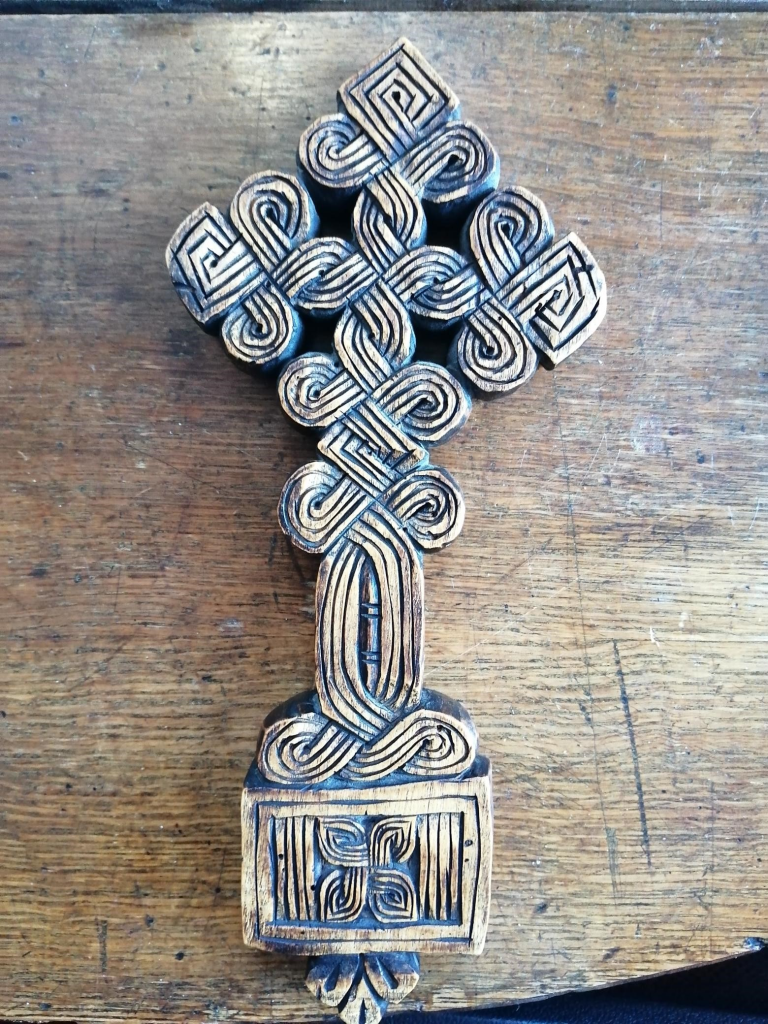
What is there to see in the darkness of this night? What does this rising look like, of which we have sung? Well the Gospel writers don’t give us much of a clue. They knew better than to try to describe what happens in a deep but dazzling darkness like the darkness of this most luminous night. There is no spectacle to see, no big reveal, no pyrotechnics. It’s almost as if to say that this resurrection, of which we have heard the first rumours, is something that takes place deep in the ground, shielded by a darkly bright cloud of unknowing. It’s as if the triumphant Lamb of God stands astride a chasm as deep as death, reaching down into that gloom to pull out those imprisoned there. It’s as if he stands upon shattered prison doors, doing the mighty, hidden work of liberation with his own bare hands, his own pierced hands, his own outstretched, searching hands with a grip as firm as love demands and as gentle as mercy’s soothing caress.
It’s as if he stands above the detritus of ruined captivity: burst bolts, shattered manacles, redundant locks, snapped chains, useless keys, deconstructed mechanisms. All the apparatus of our imprisonment lies futile, powerless against the might of one whose love does not rest until every constraint is unbound. Look carefully through the inky dark and see, amidst that pile of broken pieces, the dismantled shackles of our many imprisonments: destructive greed overcome by grateful generosity, discrimination undone by humble fraternity, resentment displaced by gracious forgiveness, fear neutralised by inner peace, pride replaced by joyful self-abandon, violence and abuse dispelled by the power of tenderness, falsehood withered in the face of truth’s steady light.
The Lamb of God, who on Friday was stripped naked in the face of death, is now dressed in white, as if for a banquet. That’s the whole purpose of this hard-won victory, to bring us to a feast, to share in the wedding banquet of a world united in love with its creator. So, in the words of St John Chrysostom, ‘Enter the joy of your Lord; and receive your reward, both the first and likewise the second. You rich and poor together, hold high festival. The table is full-laden; feast ye all sumptuously. Enjoy ye all the feast of faith: receive ye the riches of loving-kindness. For Christ is risen and life reigns!’

